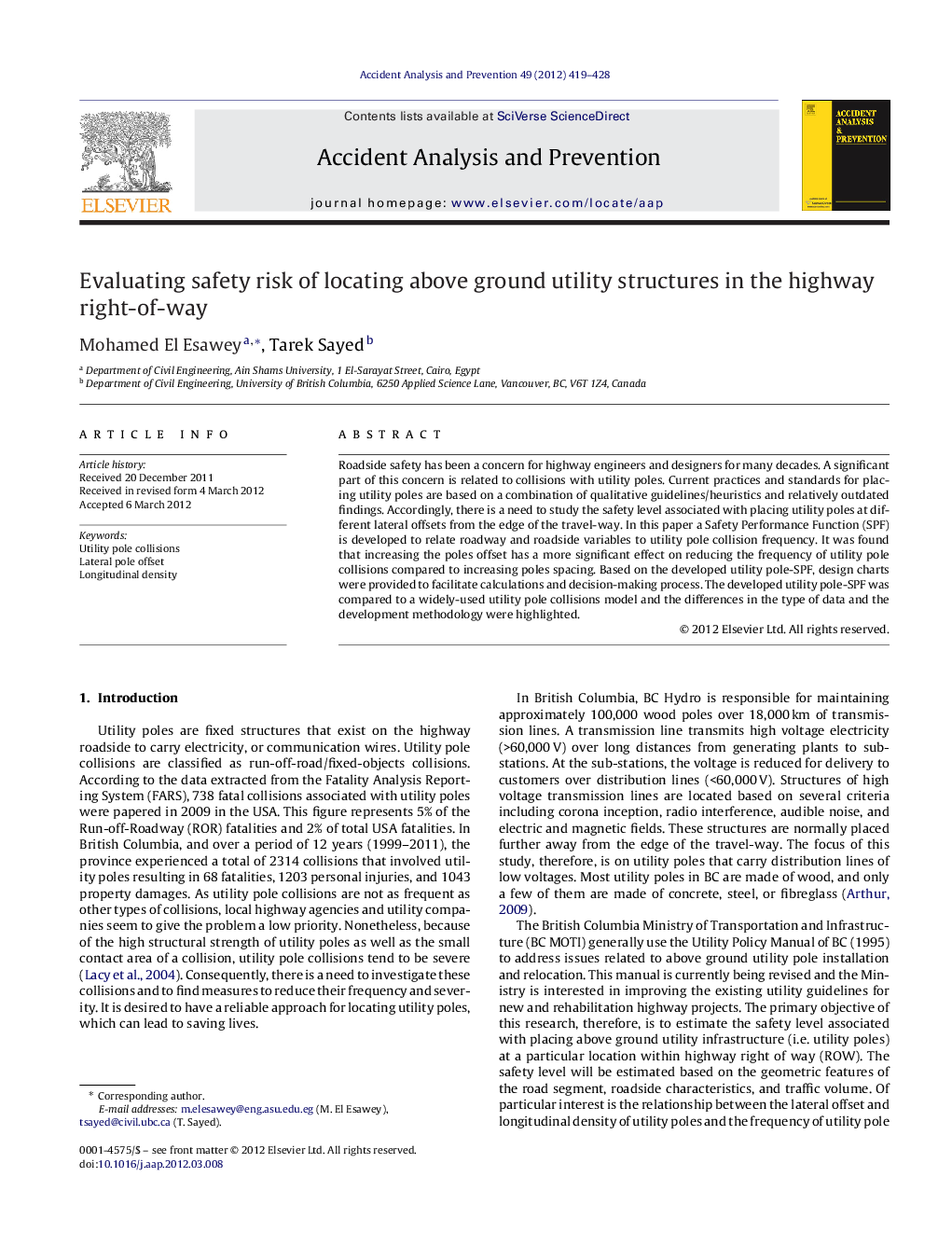| Article ID | Journal | Published Year | Pages | File Type |
|---|---|---|---|---|
| 572679 | Accident Analysis & Prevention | 2012 | 10 Pages |
Roadside safety has been a concern for highway engineers and designers for many decades. A significant part of this concern is related to collisions with utility poles. Current practices and standards for placing utility poles are based on a combination of qualitative guidelines/heuristics and relatively outdated findings. Accordingly, there is a need to study the safety level associated with placing utility poles at different lateral offsets from the edge of the travel-way. In this paper a Safety Performance Function (SPF) is developed to relate roadway and roadside variables to utility pole collision frequency. It was found that increasing the poles offset has a more significant effect on reducing the frequency of utility pole collisions compared to increasing poles spacing. Based on the developed utility pole-SPF, design charts were provided to facilitate calculations and decision-making process. The developed utility pole-SPF was compared to a widely-used utility pole collisions model and the differences in the type of data and the development methodology were highlighted.
► A review of the current standards and guidelines of placing above-ground utility poles. ► Development of a new Safety Performance Function (SPF) for utility poles that include offset and density as basic variables. ► Development of design charts that can be used by practitioners for locating utility poles. ► A comparison with a well-referenced model for placing utility poles that was developed in the early 80s.
